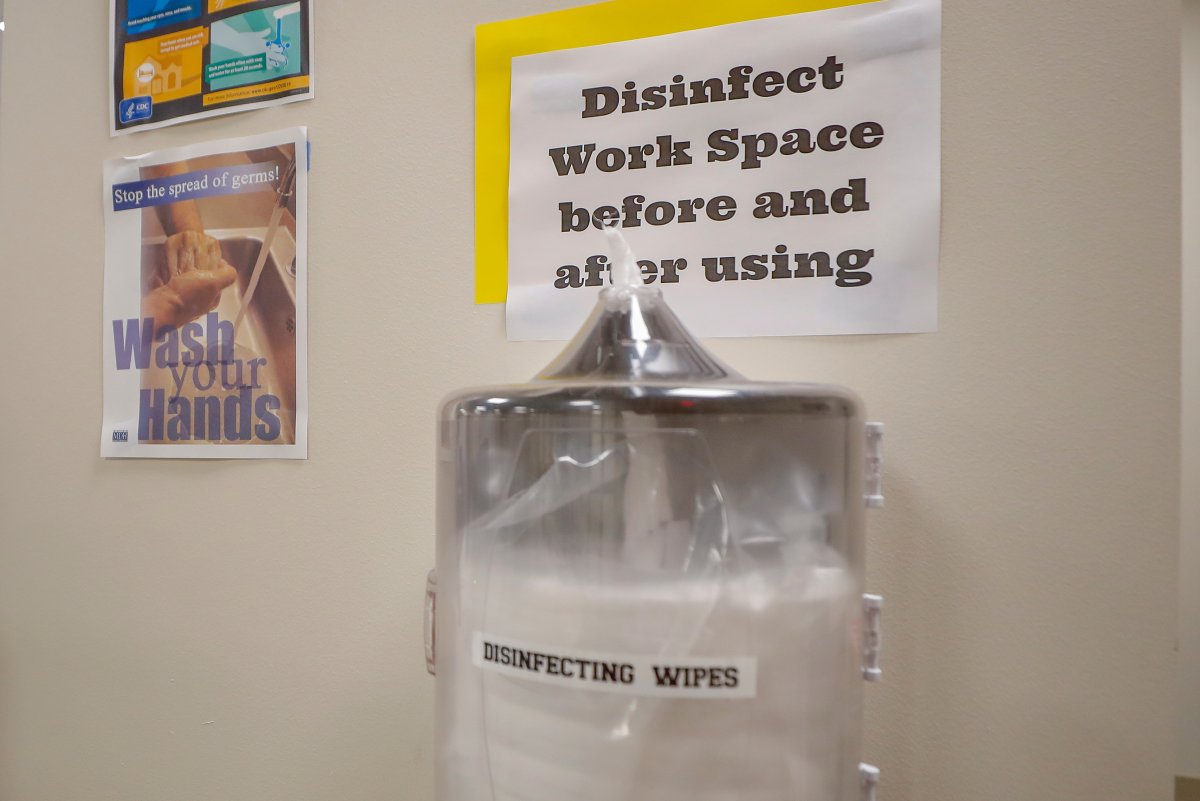To disinfect or not to disinfect, is that the question?

A recent article (May 2023) by several researchers, including CEGE’s own Bill Arnold, raised a warning about overuse of disinfectants. The use of disinfectants went way up during and after the COVID-19 pandemic. The issue has garnered interest from the media. Is this widespread use doing more harm than good?
One of the key concerns when discussing the use of disinfectants is the widespread presence of a group of chemicals called quaternary ammonium compounds, or QACs, which appear in about 50% of the disinfectants that were recommended during the pandemic. Medical experts point out that overuse of disinfectants like QACs can promote antibiotic-resistant strains. They suggest that regular cleaning with soap and water is sufficient in most cases and suggest saving disinfectants for situations where more cleansing is required.
Bill Arnold’s interest in QACs is a bit different. Arnold’s research focuses on the presence and persistence of chemicals in the environment. He and his research team are particularly interested in how the chemicals degrade and byproducts that result from degradation.
Arnold’s work was key in getting triclosan banned from household products. But when one chemical product is phased out, a replacement quickly takes its place. QACs were the quick replacement for triclosan. Arnold acknowledges that his work can feel like a whack-a-mole situation. When it comes to new chemicals, the pace of environmental investigation often lags behind commercial introductions.
Scientists who are concerned about chemicals in the environment can sometimes identify a chemical of concern based on its structure or characteristics. They might be able to say right away, “No, I don’t think you should manufacture that.” Sometimes, however, scientists find concerns much later. As Arnold explains, “QACs have been used for almost 100 years now. But our recent review article shows there is more and more evidence that there might be unanticipated environmental, ecological, or health effects. Our methods are getting much better compared to 20 years ago, let alone 100 years ago. We are now better at detecting chemicals in the environment and assessing their environmental impacts.”
Arnold’s team had been looking at QACs before the pandemic because of their widespread use. The researchers became curious about how much of these chemicals was getting into the environment, how long it would persist, how QAC’s might degrade, what byproducts might be formed in the degradation process, and if QACs or their breakdown products could get back into our water systems.
A careful scientist, Arnold is precise when speaking about what he knows. “QACs may have adverse effects in the environment,” said Arnold; “we know they are accumulating in sediments.” His research team had discovered that three or four years ago, in what Arnold describes as “a really interesting project.” He and his team collected sediment cores from various lakes and water bodies. Analyzing the two- or three-meter long cores allowed the researchers to analyze sediment going back 150 years.
Arnold and his team now have an active NSF grant looking at QACs in the environment and more detail about how they degrade. His collaborator, Patrick McNamara, a Professor at Marquette University and a CEGE alumnus, is investigating how elevated QAC levels might be disrupting wastewater treatment plant operations. “We had been getting information from our wastewater treatment partners that they are seeing disruptions that they suspect might be from elevated use of these compounds as everyone is using them more after the pandemic. We don’t have proof of that, but that is our working hypothesis,” says Arnold. “When we wrote the proposal, I reached out to the San Francisco Estuary Institute because I am on their advisory board. So, we are analyzing dredged samples from the San Francisco Bay Area, Minnesota, and Wisconsin as part of that NSF project.”
The current project dredges just the top layers of sediment, which reveals the current level of QACs in the sediment, which might reflect the last 5-10 years. The top layers depend on how fast material is deposited and how the sediment moves.
The researchers noticed patterns in the amount of QACs. The amounts increased rapidly in the 1970s and dropped off significantly at a time that corresponded with improved wastewater treatment. QACs are treated effectively, but not completely, in wastewater treatment plants. The levels of QACs are creeping up again as use of QACs increases. “The levels are not as high as they were in the 70s, but they are not going down anymore,” noted Arnold.
Arnold’s takeaways from this research? “Use soap or natural products most of the time and always read the label!”
Read the full article: "Quaternary Ammonium Compounds: A Chemical Class of Emerging Concern." Arnold, Blum, Branyan, Bruton, Carignan, Cortopassi, Datta, DeWitt, Doherty, Halden, Harari, Hartmann, Hrubec, Iyer, Kwiatkowski, LaPier, Li, Li, Muñiz Ortiz, Salamova, Schettler, Seguin, Soehl, Sutton, Xu, and Zheng. Environmental Science & Technology. DOI: 10.1021/acs.est.2c08244